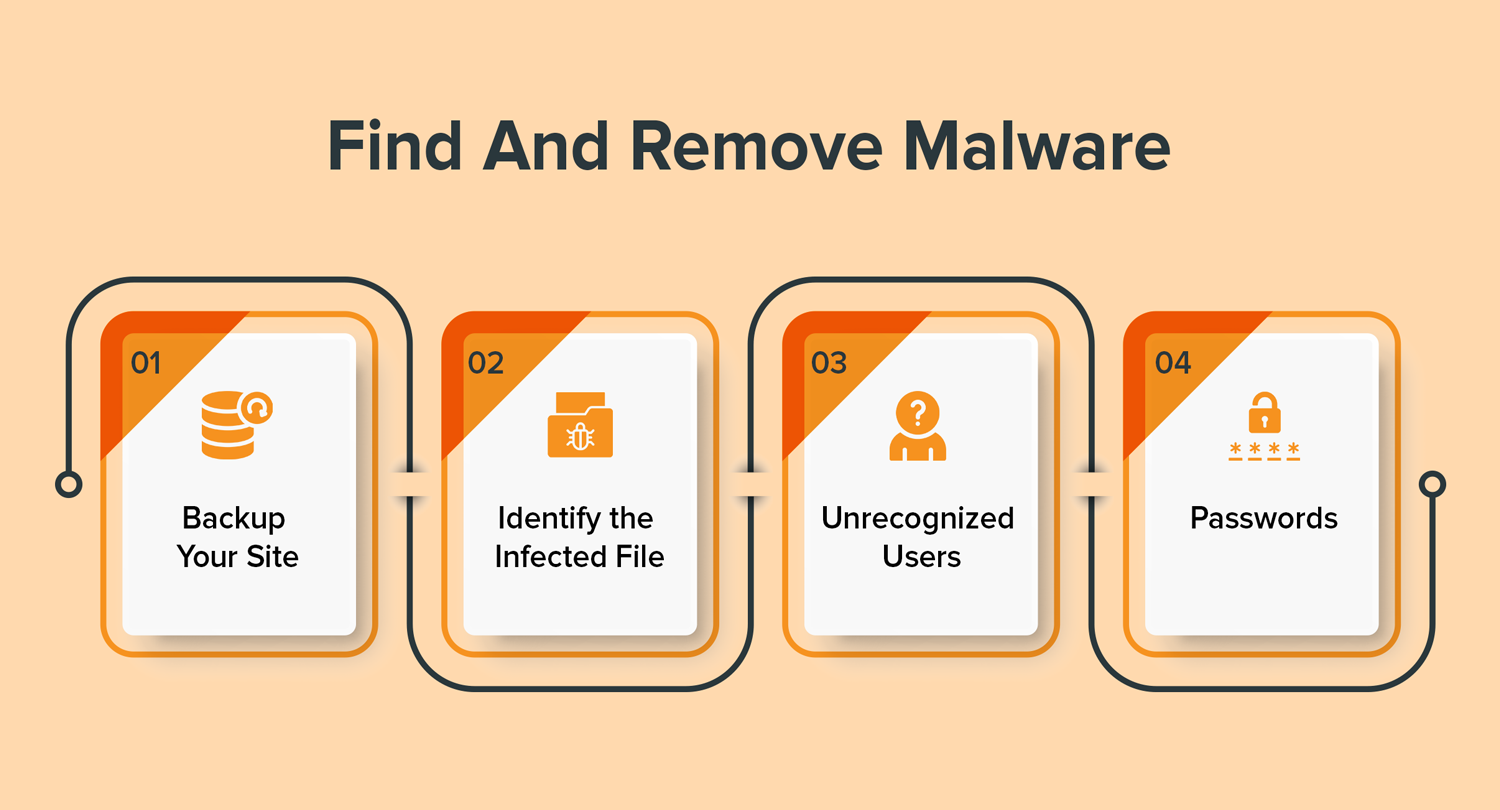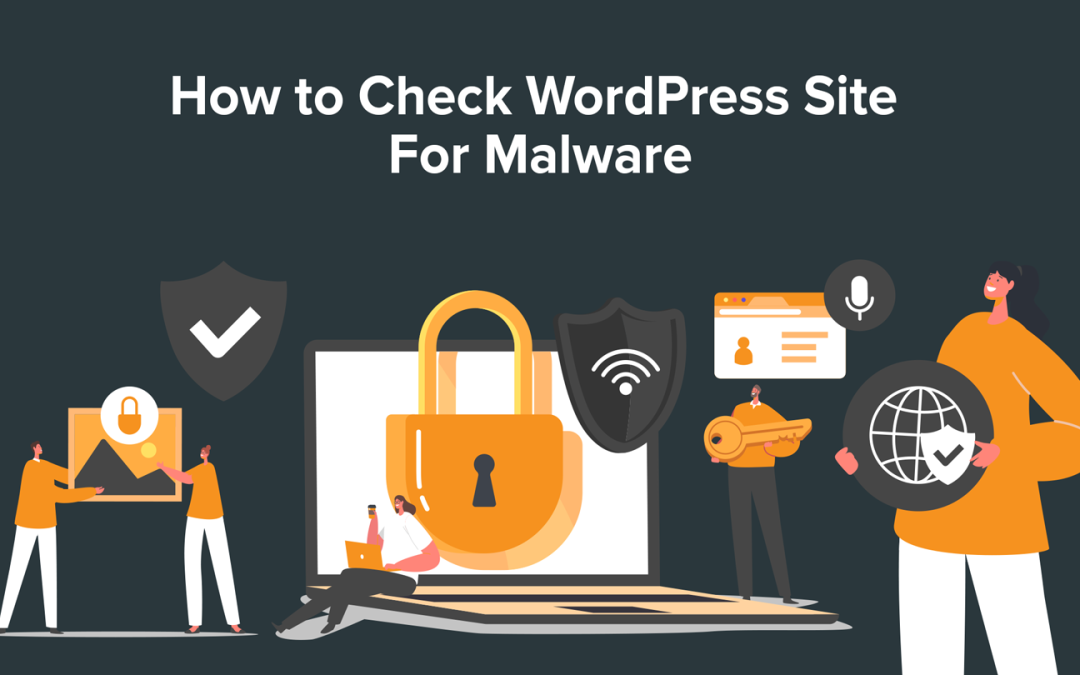First, use Sucuri SiteCheck. This is an online scanner that you can use gratis to scan your website for malware and vulnerabilities. In this article, we are going to walk through effective methods for scanning your site for malware, what to do if you find malware, and steps to prevent future infections. Not every webmaster-whoever he or she is-knows much technical information
Contemporary Situation of WordPress Security
WordPress is the world’s most-used Content Management System. With thousands of people attached to these huge communities, naturally, WordPress attracts an equal number of hackers. Sadly, a study found that more than 70% of the sites through WordPress have some kind of vulnerability.
But is WordPress itself to blame? Heck, no. WordPress is a great and secure platform. The problem often lies elsewhere — mainly in how individual site owners manage their websites. Because no two WordPress sites are the same, the combination of themes, plugins, and custom code you use could be where weak spots show up.
Most vulnerabilities result from third-party elements such as an outdated theme or plugin. Many site owners rarely update those and hence provide unauthorized attackers with open doors into their sites. Human error, like weak re-use of the same password or two-factor authentication skipped, creates numerous attack points when this problem gets coupled with it.
So, just how do you protect your WordPress site? Using basic security practices. Here’s a quick rundown of some critical steps you can take to keep your website secure:
1- Use Trusted Plugins and Themes
Not all plugins and themes are equal. Some may look nice, but developers are not trustworthy. A pretty good rule of thumb is to stick with well-researched, regularly updated plugins and themes. Avoid any older theme or plugin that hasn't been kept up to date for several years in a row-these can include old vulnerabilities that can expose your site to risk.
2- Keep Your Website Updated
All elements of your WordPress site-the core, themes, or plugins-should be updated always. These updates most of the time carry security patches.
The consequence of failing to keep these elements updated is opening your website to malware attacks and breaches. You can prevent such exposures by automating these updates or checking regularly.
3- Secure your Passwords
You would notice that one of the easiest defenses against a cyberattack is a good password. So, you would use complex passwords with mixed cases, numbers, and special characters.
Moreover, you may also hold and create powerful passwords for each account with the help of a password manager.
4- Scan Your Website Regularly
Just like scanning your computer for malware, there is a need to run routine WordPress malware scans on your website. Scan WordPress files for malware options are available in the plugins Word fence Security, Secure and Mal Care, and regular scans can ensure early detection of vulnerabilities.
5- Regular Backups
A hack may be unlucky, but in the worst of times, your backup will be a lifeline that will see you get back your site as quickly and efficiently as possible. Because you make regular backups, you can restore it to a clean state.
One way of ensuring the process of backups is automated is through such plugins as Updraft Plus WordPress hack scan, and you are indeed ready for any situation.
Why Constant Security Practices Matter
While operating a website can be terrifying at times, good security habits consistently adopted keep the spammers at bay. And once these good security practices become a routine part of your daily regime, it comes automatically when protecting your WordPress site.
Once these security measures get integrated into your workflow, your WordPress website would suffer less from malware infections or attacks when you use any WordPress website security check. With modern tools at one’s disposal, keeping your website safe is less difficult than ever before.
Safety in WordPress, Absoluit offers absolute safety in WordPress site virus scan. Implement the best security practice, regular malware scans, and much more. Keep your website and data safe—start controlling your WordPress security today.
Why Do WordPress Sites Get Targeted for Malware?
With such a huge following, WordPress is really a great choice for cybercrooks to exploit the holes. Another common thing about most websites is the use of third-party themes and plugins.
Vulnerability in these can be easily exploited by hackers to inject malicious codes, steal sensitive information, or even take full control of your site. Do malware checks and scans to detect malware before too much damage is done.

How to find Malware in WordPress Site
Now, let’s go into practical steps on how to detect malware for your WordPress site. Here are some pretty effective ways to get you started:
1- Online Malware Scanner
There are several ways of checking WordPress for malware, and one of them is using an online scan WordPress site for malware. Install nothing at all. Just give them the URL of your site, and they can start scanning for issues on your site.
Online scanner WordPress site for malware:
Sucuri Site Check: Free site check tool scans your site for malware, vulnerabilities, outdated software, etc.
MalCare: Deep scans and helps cleanse if any malware is found. Using these tools can give one a quick overview of the health of your site and the presence of any potential threats as well.
2- Install a Security Plugin
If you require stronger protection, you may install a security checker, such as one that would scan WordPress site for malware. Some plugins are designed to automatically scan for malware but will continue scanning your files for malware in the background.
Best Security Plugins:
Wordfence Security: This is an all-inclusive security plugin with malware scanning, firewall protection, and live traffic monitoring.
iThemes Security: This has made interface setup easy using features like file change detection and malware scanning.
Steps include installing a security plugin, configuring it for automatic scans, and reporting immediately on anything suspicious detected.
3- Manual Check of Files
If accessing your site's files is not too big of a chore, you can run a manual check. You can do it using an FTP client or through your hosting provider's file manager by checking key directories.
Files to Inspect:
wp-content/themes
wp-content/plugins
wp-config.php
index.php
Look for unknown files or any things that don't look quite right. Hackers tend to place their malicious code in these files.
How to Find and Remove Malware in a WordPress Site
If your scan did come up with malware do not freak out! Here is how you can remove it safely:
● Step 1: Backup Your Site
Backup your full WordPress site before making changes. This is you restore point in case something goes wrong or is affected by any malicious code.
● Step 2: Identify the Infected Files and Clean Them
Peruse reports generated by your malware scanner to know which files are infected. You can either
Manually Clean: Download clean copies of any infected file from the official WordPress repository and replace the infected files.
Use a Plugin: Tools like Mal Care will help you automatically clean up the files.

● Step 3: Change Passwords
Immediately change all users' passwords on your WordPress site. Use strong, unique passwords to minimize attacks.
● Step 4: Delete Unrecognized Users
Scan your user list for unauthorized accounts and delete them. Perhaps now is the time to enable two-factor authentication.
How to Prevent Future Malware Attacks
You now know how to clean up a malware attack on your WordPress. But how do you avoid future malware attacks?
1- Update Everything
Check your WordPress core, themes and plugins for updates. Most of the time, the backdoor for hackers is outdated software.
2- Login Attempts Throttling
Keep your site free from brute force attack by limiting login attempts that can be performed at one time. Some security plugins enable this feature.
3- Two-Factor Authentication
This will attract another layer of defense. In this case, two-factor identification will be incurred by sending a code to your mobile phone before use occurs.
4- Use a Web Application Firewall
A WAF enables you to screen out the mal traffic that might reach your site. Services such as Secure or Cloudflare offer solutions on WAF which can keep your site safe.
5- Carry Out Regular Security Audit
Schedule Scanning of Your Malware WordPress website. Scheduled scans mean that you never miss an issue and that your site is secure.
Conclusion
WordPress security isn’t something you should take lightly. Regularly scanning wp site for malware, keeping everything updated, and using strong security practices can significantly reduce the risk of an attack. It’s much easier to prevent a malware infection than to deal with the consequences after the fact.
Take proactive steps today: perform regular WordPress site scans, install a security plugin, and make sure your website is protected. And if you ever need to clean your site, follow the steps outlined in this guide to remove malware quickly and effectively.
Ready to check your WordPress site for malware? Contact us today and keep your site safe from malicious threats!.
